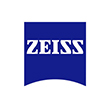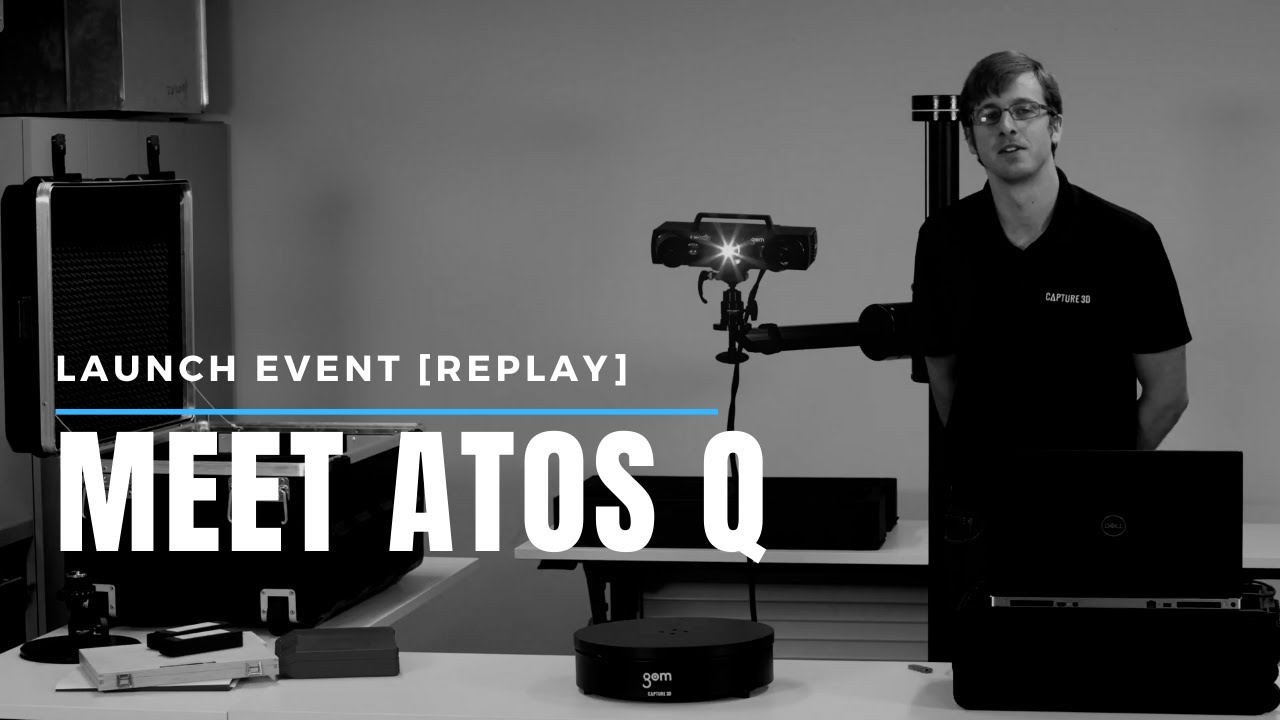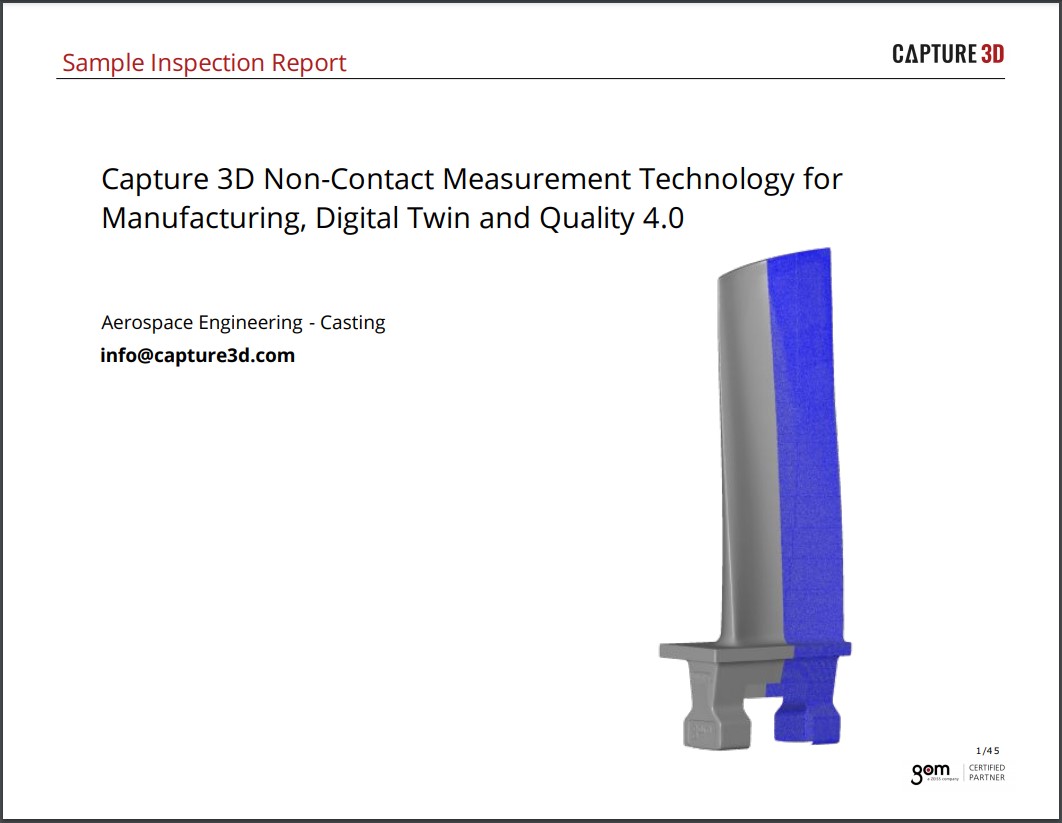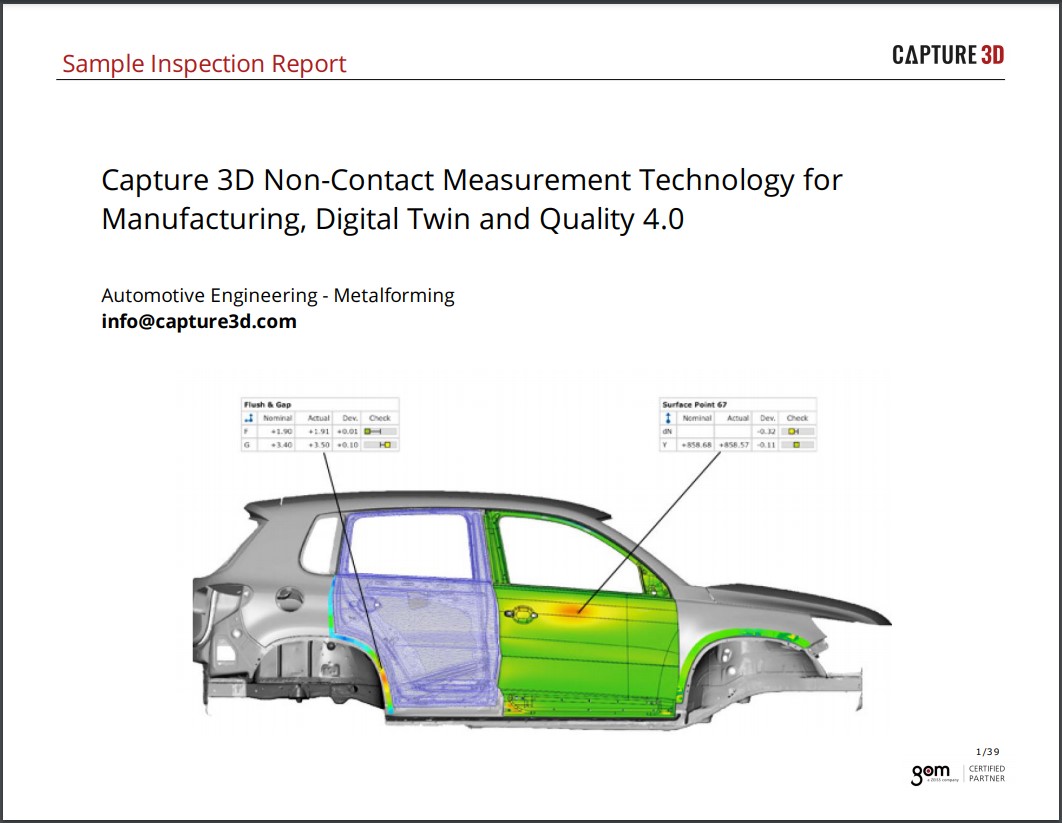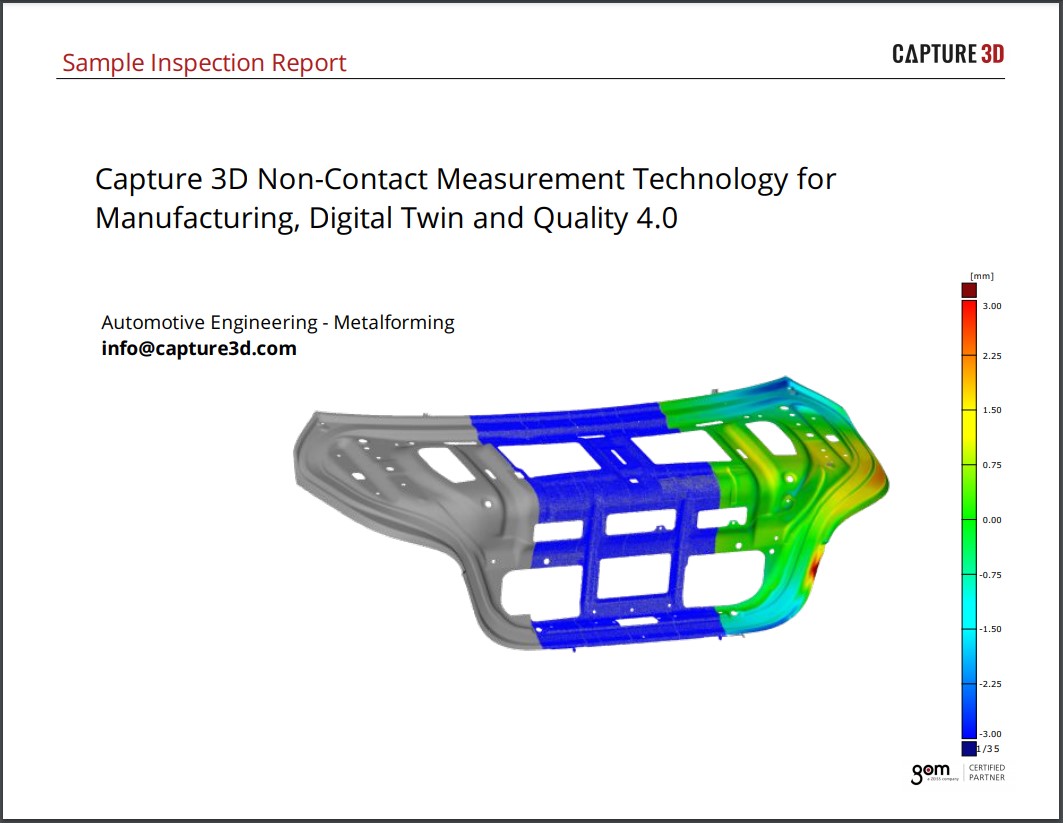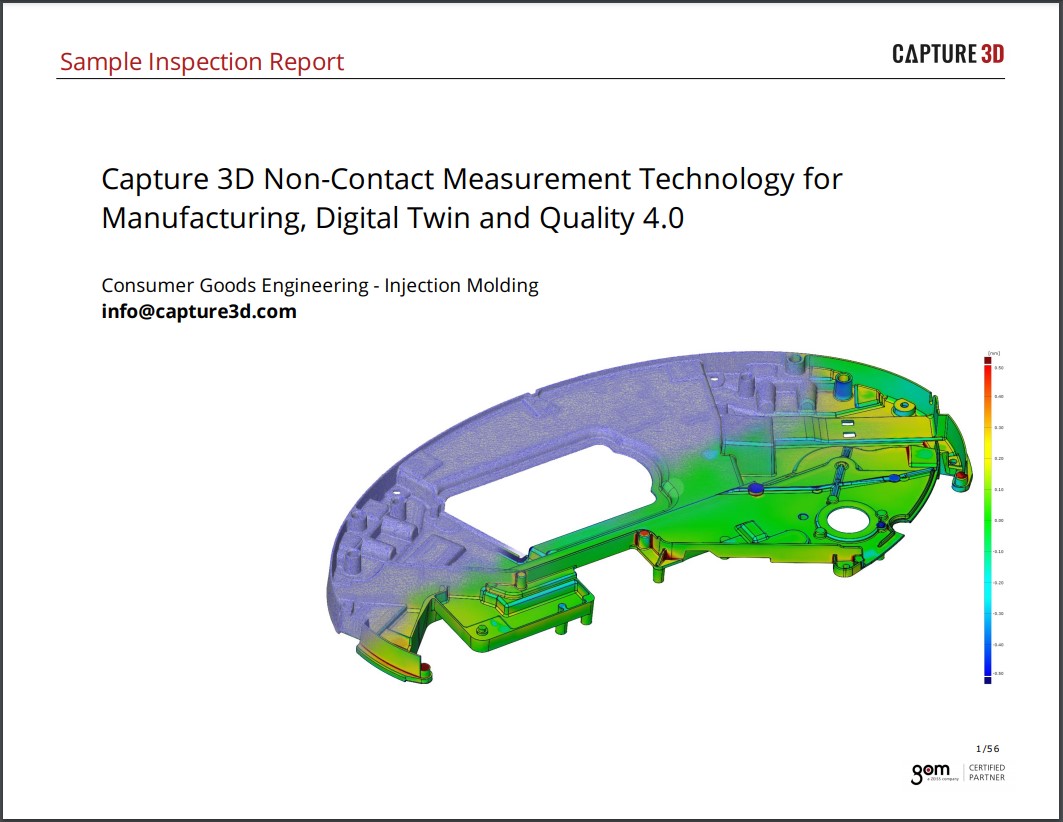Which Optical 3D Measurement Systems are Proven to Slash Costs and Improve Repeatability Dramatically?
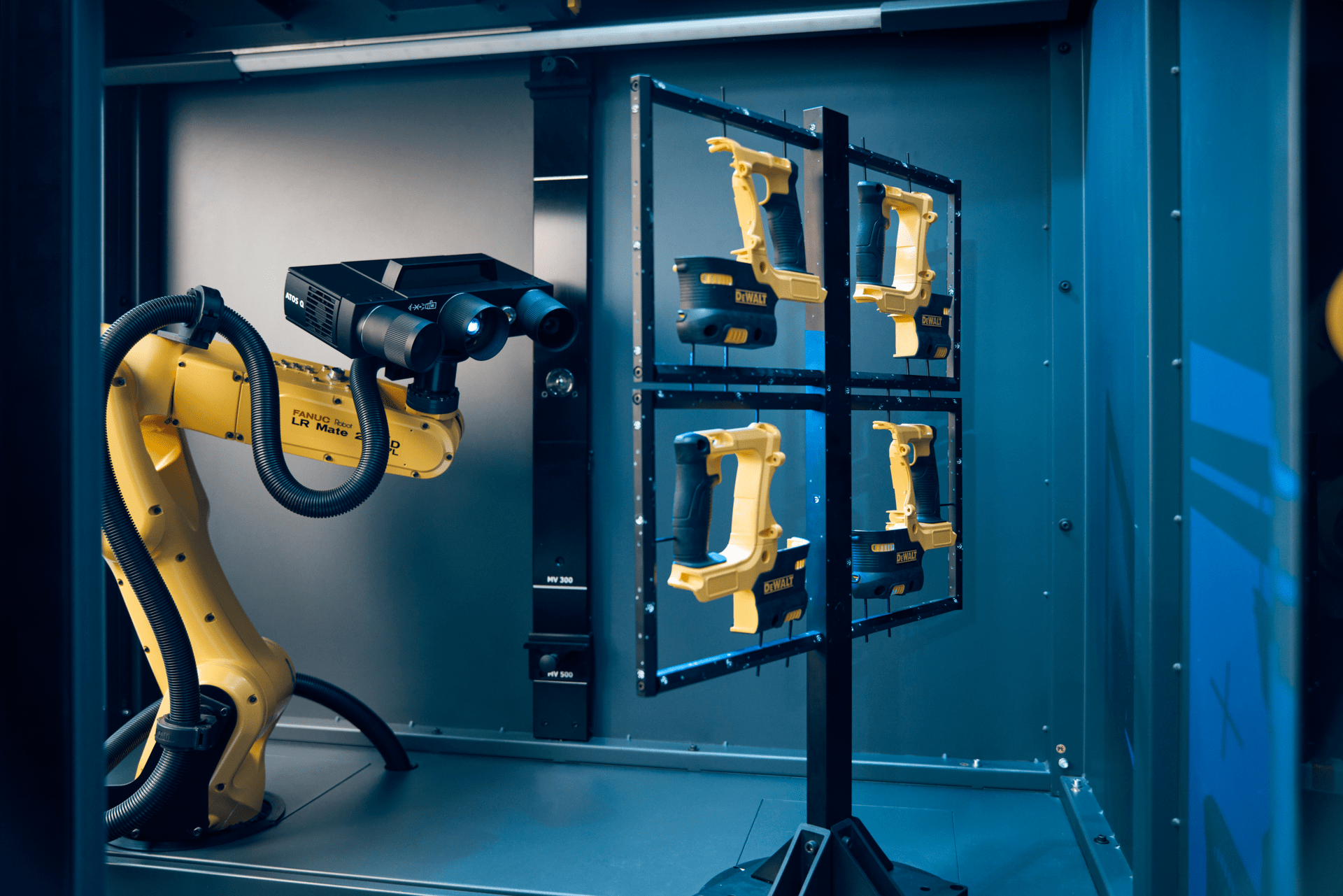
Optical 3D measurement systems are essential for ensuring quality and accuracy across various industries. Optical 3D measurement systems use light-based technologies such as lasers, cameras, and projectors to measure objects. This technology offers several advantages over traditional measurement methods such as contact probes, gauges, and calipers. Metrology-grade optical 3D measurement systems are faster, more accurate, flexible, and reliable.
Optical 3D scanning systems are increasingly deployed in manufacturing and metrology settings because they increase efficiency and improve measurement repeatability. These advantages are vital to helping businesses improve operating margins in today's competitive environment.
This article will explore how optical 3D measurement systems can help you slash costs and improve repeatability in your manufacturing processes. We will also discuss some of the applications of optical 3D measurement systems and how to choose the right system for your needs.
Understanding Optical 3D Measurement Systems
The best optical 3D measurement systems are based on the principle of triangulation. This methodology uses two or more light sources to measure the distance and angle of light reflected from an object's surface. The light sources can be lasers or projectors that emit structured light patterns onto the object. The reflected light is then captured by sensors that calculate the 3D coordinates of the object's surface. The resulting data is then processed by software that creates a digital model of the object.
Some of the key elements and technologies used in an optical 3D scanning system are:
• Structured light: Structured light is a technique that uses a light source to project a pattern of light onto the object's surface. The pattern can be a grid, stripe, or dot. Structured light 3D scanners use cameras to capture the pattern deformation caused by the object's shape. Structured light 3D scanners can quickly capture large surface areas with very high levels of detail.
• Sensor: The sensor is the component that captures the reflected light from the object's surface. The sensor can be a camera or an image sensor that converts light into electrical signals or digital data. Multiple cameras and sensors can be integrated into scanning systems to calculate the distance and angle the light has traveled and reflected off the object's surface.
• Software: The software processes the data captured by the camera and creates a digital model of the object. The software processing can involve various steps such as calibration, alignment, registration, reconstruction, filtering, smoothing, meshing and rendering. The type of software processing determines the accuracy and complexity of the model.
Optical 3D measurement systems have several advantages over traditional measurement methods, such as:
• Non-contact: Optical systems do not touch or damage the object being measured, which reduces wear and tear, contamination, and deformation. Non-contact 3D scanners can also collect surface data from complex or organic shapes that would be challenging for tactile measurement systems.
• Speed: Blue light 3D scanners and optical systems can measure objects faster than manual methods, which reduces cycle time and increases productivity.
• Accuracy: Optical systems can measure objects more accurately than manual methods, reducing errors and rework.
• Flexibility: Blue light 3D scanners come with various features and configurations to offer you the flexibility to collect data from parts of different sizes, shapes, colors, and materials.
Cost Reduction through Optical 3D Measurement Systems
Optical 3D measurement systems can help you reduce costs in your manufacturing processes in many important ways:
• Eliminating manual measurement errors: Manual measurement methods are prone to human errors such as misalignment, miscalculation, inconsistency, and bias. These errors can lead to defects, scrap, and rework, increasing costs and reducing customer satisfaction. Optical 3D measurement systems can eliminate these errors by providing objective, accurate, and repeatable measurements to meet quality standards.
• Optimizing production efficiency: Manual measurement methods are time-consuming and labor-intensive, which reduces production efficiency and capacity. Optical 3D measurement systems can optimize production efficiency by measuring objects faster, more efficiently, and reliably than manual methods. With these advantages, you increase throughput, reduce downtime, improve utilization and streamline workflows.
• Minimizing wastage: Manual measurement methods can cause wastage of materials, energy, and resources due to overproduction, scrap, and rework. Optical 3D measurement systems can minimize waste by measuring objects precisely and accurately, which enables you to optimize material usage, reduce energy consumption, and conserve resources.
Some real-life examples and case studies illustrating cost savings achieved through optical 3D measurement systems are given below:
• BMW's use of optical 3D systems has increased efficiency, reduced waste, and accelerated problem-solving. Through component measurements with a highly repeatable optical system, BMW was able to root cause a widespread issue to an individual process, and a resolution solved 97% of the defects reported.
• Jabil is one of the largest producers of electronic components for industries such as aerospace, automotive, consumer products, telecommunications, and medical technology. Through the use of blue light 3D scanning technology, Jabil has reported reductions in first-article inspection times from 40 hours to just 9 hours per component.
• Ford has identified 14 critical areas for cost reduction and process improvements directly through the use of blue light 3D scanners. "By far the most effective and most successful application to-date is to reduce die rework" - Ford
Improving Repeatability with Optical 3D Measurement Systems
Optical 3D measurement systems can help you improve repeatability in your manufacturing and quality control processes by:
1. Enhancing repeatability compared to traditional methods: Traditional measurement methods such as contact probes, gauges and calipers have low repeatability due to operator skill, environmental conditions, measurement setup, and calibration. These factors can cause variations in measurement results that affect quality and reliability. Optical 3D measurement systems can enhance repeatability by providing consistent, accurate, and reliable measurements independent of these factors.
2. Providing precision and accuracy: Metrology-grade optical 3D measurement systems provide best-in-class high precision and accuracy in metrology. Precision refers to the degree of agreement among repeated measurements, while accuracy refers to the degree of agreement between the measured and actual values. Optical 3D measurement systems can achieve high precision and accuracy using advanced structured light technology, quickly measuring objects with fine details and features.
Repeatability is crucial in many aspects of manufacturing. Metrology departments need confidence in the measurements taken to ensure product quality is maintained. Aerospace components and assemblies, turbines and power generation, and medical devices are all examples of high-tech and high-quality products that rely on optical 3D measurement systems.
Applications of Optical 3D Measurement Systems
Optical 3D measurement systems are widely used in various industries for different applications such as:
• Quality inspection: This is the process of checking whether a part meets the specified quality standards or criteria. Quality inspection can be used for defect detection, dimensional analysis, surface inspection or comparison, and more. Optical 3D measurement systems can enable quality inspection by providing objective, reliable, comprehensive data analysis and reporting.
• Reverse engineering: This is the process of creating a digital model of an existing object or part by capturing its shape and dimensions. Reverse engineering can be used for purposes such as design modification, product development, quality control, reproduction of legacy parts, or documentation. Optical 3D measurement systems can facilitate reverse engineering by providing fast and accurate data capture and 3D model creation.
• Rapid prototyping: This is the process of creating a physical model or prototype of an object by using additive manufacturing techniques such as 3D printing. Rapid prototyping can be used for purposes such as design validation or product testing. Optical 3D measurement systems can support rapid prototyping by providing accurate data input and output for 3D printing, validation, and more.
Some of the specific examples of applications in industries such as automotive, aerospace, and medical are:
• Automotive: Optical 3D measurement systems can be used for applications such as measuring car body parts for fitment analysis, measuring seats and interiors for ergonomic evaluation, measuring car exteriors for aerodynamic simulation, and measuring engines for performance optimization.
• Aerospace: Optical 3D measurement systems can be used for measuring aircraft wings for structural analysis, aircraft fuselage panels for defects, engines for vibration analysis, and measuring aircraft landing gear for load analysis.
• Medical: Optical 3D measurement systems can be used for applications such as measuring surgical implants for fit and function analysis, measuring human body parts for prosthetic design, dental models for restoration, and measuring skin lesions for diagnosis and treatment.
Choosing the Right Optical 3D Measurement System
Choosing the right optical 3D measurement system for your needs depends on several factors, such as:
• Accuracy: This is the degree of agreement between the measured value and the actual value. Accuracy can be influenced by factors such as resolution, calibration, noise, and distortion.
• Resolution: This is the smallest unit of measurement that the system can detect. Factors to consider are sensor size, pixel density, focal length, and magnification.
• Speed: This is the rate at which the system can measure objects. Speed is influenced by factors such as data acquisition, data processing, data transfer, and data output. Speed can also be increased with automation, so take into account if the optical 3D measurement system can be automated.
• Scalability: This is the ability of the system to adapt to different measurement scenarios and requirements. Scalability is influenced by modularity, flexibility, and portability.
Which Optical 3D Measurement Systems are Proven to Slash Costs and Improve Repeatability Dramatically?
Some of the best 3D measurement systems to reduce costs and increase repeatability include:
• ATOS 5 Series: These high-performance 3D scanners are specially designed to measure objects with high accuracy, resolution and speed. They are ideally suitable for applications such as quality inspection, reverse engineering, and rapid prototyping in industries such as automotive, aerospace and medical devices. The ATOS 5 family includes the ATOS 5, ATOS 5X, ATOS 5 Airfoil, and the ATOS LRX.
• ATOS Q: This compact, versatile, structured blue light 3D scanner measures objects quickly and reliably. Its sleek, modern design features interchangeable lenses. It is portable and perfect for use with a variety of parts.
• ZEISS T-SCAN hawk 2: This handheld laser scanner can measure objects with high mobility and ease of use. It is suitable for applications such as deformation analysis, assembly verification, and analysis in aerospace, construction, and energy industries.
Ready to Start Slashing Costs and Improving Repeatability? Contact Us
Optical 3D measurement systems are proven to slash costs and dramatically improve repeatability in manufacturing processes. They can help you eliminate errors caused by manual measurement methods, optimize production efficiency, and minimize waste. They can also help you enhance repeatability, provide precision, and improve accuracy.
Choosing the right optical 3D measurement system for your needs depends on several factors, including accuracy, resolution, speed, automation options, and scalability, so it's important to have a metrology expert guide you to the best optical 3D measurement system for your application.
If you want to learn more about our optical 3D measurement systems and how they can help you slash costs and improve repeatability in your manufacturing processes, download our ROI calculator or contact us for a demo.
